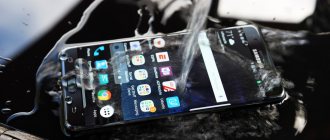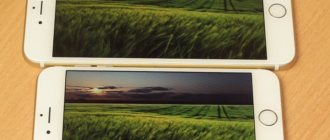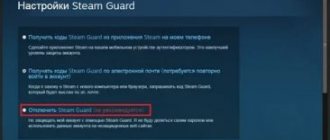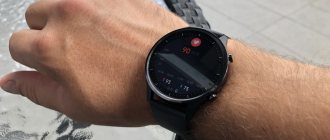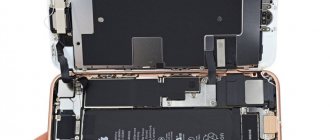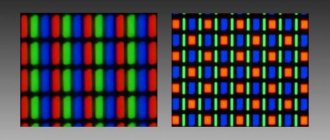What are the pros and cons of protective glass?
Protective glass is several times harder than the most durable film, and therefore saves the device not only from scratches.
As the manufacturers say, it can even withstand a blow from a hammer. We do not recommend conducting such experiments. But we can say: if it falls, it is the glued glass that will most likely break, and not the screen of the device. However, such protection does not affect the sensitivity of the sensor and the brightness of the image.
iphones.ru
However, glass is more expensive than film. And you can select it only for relatively popular models of smartphones and tablets.
Do I need protective glass for iPhone and other phones?
Let's take a closer look at whether it is necessary to glue protective glass to smartphones.
Opponents of glass stickers emotionally say that modern glass does not need protection. Supporters of protective glasses show broken glasses and say that only thanks to them the phone screen remained intact.
glass and case protecting the screen
We analyzed such information and combined it with personal experience in using glass and our knowledge. We present you with a “unambiguous” answer as to whether you need a protective glass for your phone.
The question can be divided into two parts: 1. Does protective glass help or not 2. Is the protection of your original glass enough for you?
A video about what tempered glass is, starting with Prince Rupert's Batavian Tears. The beginning of the video is interesting.
Does protective glass help?
- Protective glass will protect your smartphone screen from scratches. Modern glasses, including Gorilla Glass, do not protect against scratches left by grains of sand or jewelry from pebbles.
- Protective glass will protect the screen from scuffs. After a year and a half, the olephobic coating on the original glass will peel off and slight uneven reflections will become visible.
- Glass will increase the chances of saving the screen if it falls. Imagine two even ordinary, non-tempered glasses (window mirror). If a pebble hits such a sandwich or it falls, the energy of the impact is absorbed by the first layer. Naturally, if the impact is too strong, the second layer may be damaged. You can, in principle, turn the phone around and here you clearly cannot say that the protective glass does not help. It is only a plus by absorbing and distributing the impact energy.
- Glass increases bending strength. A man bought an iPhone. He puts it in his back pocket, jumps into the car, and suddenly hears a crunching noise from behind: “Fuck... if only for a spine... The additional layer of material provides additional rigidity.” Naturally, there is not much of it from thin glass.
- It is a myth that glass does not protect edges. Good glass protects the entire screen. Good glass and the case fit together in such a way that the original glass is completely closed or the gap is so small that the impact will fall on them.
- It is a myth that the phone always falls on the corner of the screen where it is not protected by glass. The misconception stems from the fact that glass and screens are usually broken at the edges. But this does not mean that glass does not protect. The phone falls as it should. There are no special centers of gravity at the edges that force you to receive a blow to the end. Plus, the short flight time and arbitrary initial spin make it impossible to predict the point of impact. Turn the phone in your hands and make sure that when it falls, the impact does not always fall on the glass.
- It is a myth that the protective glass of a phone cracks on its own. Glass cracks if it has been damaged, for example by keys or when bent in a jeans pocket. This causes tiny chipping of the edges, releasing internal stress and causing cracks to appear.
- Glass degrades the properties of the screen. Glass does not affect the images and sensor operation unless it is outright rubbish. If the glass does not have cutouts for sensors and a camera, there may be a problem with the proximity sensor. You need to choose the right glass for your device or glue it evenly. It is extremely useful to find the theme of your phone on w3bsit3-dns.com and in the accessories section see which glasses do not have problems.
- It is a myth that the glass and case hide the screen. Smartphone screens have become curved, but software makers don't put anything meaningful near the edges. Text or elements located end to end do not look beautiful. Take a phone with glass glued on and you will see that nothing is hidden. The curved luminous part is a design element and more on that below.
Turn the phone in your hands
Take the phone in your hands and, holding it horizontally with the screen down, slowly lower it to the table surface. The likelihood of him falling flat is negligible. Near the table, tilt it even a degree and it becomes clear that naturally the blow falls on some edge. But pay attention, if the protective glass is glued, if it falls almost flat, the impact will be on its edge, and not on the edge of the screen. Continue to lift one edge of the phone and it will become clear that the angle (and therefore the probability) at which the phone no longer touches the protective glass and has not yet touched the body (case) is not that great. When they show you a broken screen and say that the phone always falls at an angle and the glass won’t protect it, it’s impressive. In fact, the likelihood that the phone will fall at an angle of exactly 45 degrees is small, and suitable glass and a case will provide additional protection in this case as well.
You need protective glass if:
- You are in the habit of treating things so that they look like new or you intend to sell the phone in the future.
- If the environment for the phone is unfavorable - dust or dirt (for example, working at a construction site).
- You are an outdoor enthusiast.
- You value your phone more for its functionality and less for its design.
- You drop your phone.
- The cost of the phone and repairs to replace the screen are significant for you.
You don't need safety glass if:
- Buying a new phone is an ordinary purchase for you.
- You change your phone after 1 - 1.5 years.
- Design, for example a perfectly rounded screen or minimal thickness, is no less important to you than functionality.
- Other points do not apply when protective glass is required.
Thus, protective glass is not a panacea. It doesn't give the WOW effect, but it definitely increases the durability of the original glass.
What kind of safety glass are there?
medium.com
Technologies for protective accessories do not stand still and develop along with smartphones. Now on the market there are glasses with high-quality oleophobic coating, rounded edges, and frames that replicate the design of gadgets. Conventionally, all types of protection can be divided into three categories:
- 2D - ordinary glass with straight ends that do not reach the border of the screen by about 1 millimeter;
- 2.5D - these options have small smooth chamfers around the perimeter, which are combined with the curves of the body;
- 3D - special glass with curved edges for smartphones with a screen extending onto the side edges.
Which is better glass or film?
Both tempered glass and films have their pros and cons, which do not allow us to draw clear conclusions.
Transparency
Because of the film or glass, it is often necessary to increase the brightness on the device, as a result of which the battery consumption occurs much faster. But modern manufacturers have still found a way out - almost all glass and films have 100% transparency.
Impact resistance
Glass is much harder than film, so it has less shock-absorbing properties. When impacted, the film is able to bend and absorb energy, so it absorbs energy. But glass can’t do that, so there are two possible options:
- In the event of a collision, it will break, taking on all the energy.
- The glass will remain intact, but the display will be severely damaged.
To avoid the second option, choose a protective accessory that is no harder than the original phone screen.
Scratch resistance
The hardness of films, depending on the composition and production technology, barely reaches 5 points. Therefore, they are easy to scratch even when touched with a fingernail.
While glass has a hardness of 5 to 8 units. Some types cannot be scratched even “on purpose”, because their surface is well protected even from steel.
Appearance
After installation, the film after a few months becomes not the same as it was: scratches, abrasions are visible on it, the corners begin to peel off.
But if you choose the glass incorrectly, it will also give the smartphone an unsalable appearance. Despite this, it still looks more aesthetically pleasing.
Price
When ordering from China, it will be profitable to buy both film and glass. But if in the first case the product does not differ in any way from the branded one, then in the second the differences are still visible. Budget glasses will not always be able to protect your phone even from scratches, and they will also last a short period of time. In addition, almost all Chinese copies do not have a coating that protects the smartphone from stains and stains.
How to program an NFC tag
In order to set an NFC tag to perform any action, it must be programmed in the application. You can do this as follows:
- secure the tag in the place where it will be used;
- go to the app store;
- select any suitable programming utility. There are many such software: TagWriter, NFC Tasks, etc.;
- wait for the utility to install, open it to create the required task for the selected microchip;
- Once the action is selected, move your smartphone to the tag and wait for the notification. Ready.
If necessary, the same tag can be removed from its usual place and programmed to perform some other task.
Note! Before launching the programming utility, make sure that the NFC module is enabled on your phone.
If you were unable to program the tag on your iPhone, Samsung or any other smartphone, we recommend rebooting the device and repeating the procedure. Often the problem is system failures.
To bet or not
Whatever the protective glass, it really protects the screen from scratches, and this can play a significant role if you plan to sell your smartphone one day. A neater appearance means a higher price. Protective glass also reduces the risk of damaging the display when dropped, although not as significantly as marketers would have you believe.
It would seem that the more expensive the phone, the more expedient it is to equip it with additional means of protection, given the costly repairs, but in practice this is not always the case. Flagships already have strong enough displays for the glass on top to play such a big role, but cheaper devices whose screens have an air gap could definitely use some extra protection. Whether to play it safe or not is ultimately up to you to decide.
Topic: The most bad habits that are killing your smartphone
Safety glasses have their own technical properties. Let's look at them.
Hardness 9H
This characteristic is not an indicator of how hard the phone is based on the Mohs scale, as some users think. 9H means that you cannot scratch this glass by taking a 9H pencil, the hardest of pencils. This statement is not very reliable, but it is easy to check at home.
Oleophobic coating (OP)
This parameter is the main one when you choose tempered glass for your phone. Protective glasses differ from films in that fingerprints are very clearly visible on them. Of course people don't like it. This is what the OP is protecting from. It is a layer of oil that repels various fats. If you have oleophobic glass, there will be several times fewer various fingerprints and grease stains on it. But remember that the OP disappears over time. On average, after 6-9 months.
The glass is military grade
For the most part, this is a trick of marketers. Every glass can be broken if you really want to, and the military standard is not of much help to you here.
Privacy filter (layer that protects against spyware)
This is a special coating that will hide the data on the screen if a person looks at it from a side angle of 300-500. This function is useful for those who do not want their information to be seen by strangers. But it has a drawback: often such a filter has a negative impact on the clarity of the picture.
Matte layer
Glass with such a layer is not widely used and is created mainly for phones that are already popular. Whether or not to buy such glass is a personal matter for the buyer. If you don't like a shiny, glossy display, you need to stick a frosted glass on it, and the annoying glare will disappear.
If you glued a protective glass, is your smartphone fully protected?
Such a piece of glass only protects the display. It does not serve as a cover. If the phone hits the ground with its edge, the impact force will be on the screen, and it will most likely be damaged. According to the Wirecutter website, phones fall this way very often. In such a situation, the phone often turns out to be unharmed, but the display is covered with many cracks.
If the phone falls to the ground with its front surface, the protective glass may be broken, but the screen will survive. The same protection will protect against chips and scratches. Protects you if you have keys and other items in your pocket.
Conclusion: does your phone need a protective glass? It is necessary, but do not forget that a clearly fitted piece of glass will take into account every feature of the screen (if it has rounded edges, there are cutouts, holes for the camera, a fingerprint sensor, etc.). Such glass will not reduce the sensitivity of the touchscreen and will not interfere with the use of the display for its intended purpose. There are no fingerprints left on it. But such protection will not replace the case and will not give you a guarantee that the phone will not be damaged after a fall. This method of protection extends the life of the smartphone and prevents expensive repairs. Take care of your phones!
Sincerely, Andrey Zimin 07/19/2020


